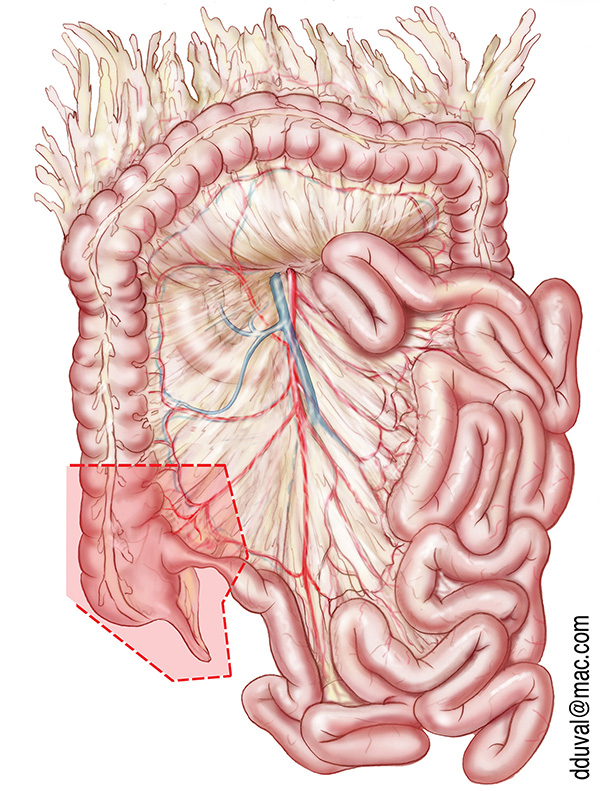Stenosis of the terminal ileum
- Laparoscopy
- Admission the day before surgery
- No bowel preparation required
- Operating time 2 hours
- Nasogastric tube 48h after surgery
- Resumption of oral diet 3 days after surgery
- Length of hospital stay 5 days on average
- This procedure is part of our Fast Track program (enhanced recovery after surgery [ERAS] protocol
Surgical indications are limited by failure or by impossibility of medical treatment.
The main indications are :
- Symptomatic gastrointestinal stricture with little inflammation (Koenig syndrome)
- Complications or ineffectiveness of corticosteroids, immunosuppressants or biotherapy.
- Complications involving abscesses or fistulas that are too severe for medical treatment, or when treatment has failed, as well as peritonitis.
The nutritional, psychological and functional consequences that can result from surgery must always be discussed with the patient’s gastroenterologist. Over the last 15 years, results obtained with new medical treatments (immunosuppressors and TNF inhibitors especially) have tended to reduce surgical indications.
Stenosis of the terminal ileum is the most common surgical indication. It is most often undergone under laparoscopy with minor functional consequences (diarrhea in 30% of cases). The procedure involves removing the terminal ileum and the cecum, as well as restoring di-gestive continuity (no pouch needed).
In the case of complications with abscess and/or fistula (ileo-vesical, ileo-sigmoid or ileo-pelvic) (fig 1.), surgical resection under laparoscopy is also possible provided that it is as conservative as possible.
In the case of large abscesses, a drainage puncture under radiological control with 6-week antibiotherapy is recommended before surgery.
To avoid relapse after surgery, it is absolutely essential not to smoke. It is also often re-commended to continue immunosuppressive treatment. In the vast majority of cases, a colo-noscopy will be necessary 6 months after surgery.



